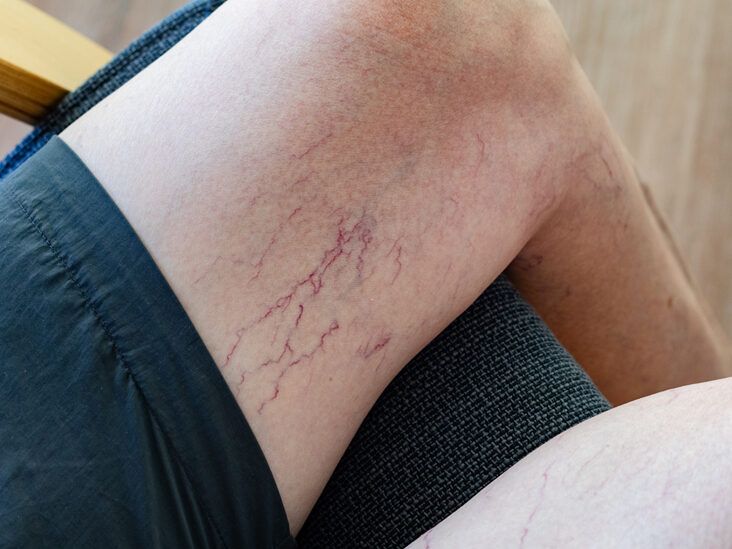Spider veins are a common yet often misunderstood vascular condition that affects millions of people worldwide. These tiny, web-like veins—often red, purple, or blue in color—tend to appear on the legs and thighs. While typically harmless, spider veins can be a cosmetic concern for many individuals, especially those who value clear, healthy-looking skin. At Dynamic Aesthetic Clinic Dubai, a renowned name in the field of cosmetic and aesthetic treatments, spider vein removal is one of the sought-after procedures thanks to the clinic’s advanced technology and personalized care.
What Are Spider Veins?
Spider veins, medically known as telangiectasias, are small, dilated blood vessels that appear close to the skin’s surface. They often resemble spider webs or tree branches and commonly occur on the thighs, calves, and ankles.
Causes of Spider Veins on Legs
Understanding the root causes of spider veins can help you take preventive measures and choose the best treatment options. Several factors can contribute to the development of these veins:
| Cause | Description |
|---|---|
| Genetics | Family history is a significant risk factor. |
| Age | Vein elasticity diminishes with age, causing blood pooling. |
| Hormonal Changes | Pregnancy, menopause, or birth control pills can increase vein formation. |
| Prolonged Standing | Occupations that require long hours on feet can strain leg veins. |
| Sedentary Lifestyle | Lack of movement weakens circulation and vein health. |
| Obesity | Extra body weight puts pressure on leg veins. |
| Sun Exposure | Excessive sun exposure can damage blood vessels, especially on fair skin. |
Common Symptoms of Spider Veins
While often a cosmetic issue, spider veins can sometimes cause physical symptoms. These include:
- Aching or heavy sensation in the legs
- Itching or burning around the vein site
- Swelling in the lower legs or ankles
- Restlessness in the legs, especially at night
- Visible red, blue, or purple vein patterns
Diagnosis: How Are Spider Veins Identified?
Diagnosis is usually straightforward and begins with a visual inspection at Dynamic Aesthetic Clinic. A physician may also perform the following:
- Medical history review
- Physical examination of the legs
- Duplex ultrasound to assess blood flow and rule out deeper vein problems
Treatments for Spider Veins on Legs
Thanks to advancements in aesthetic medicine, spider veins can be effectively treated with non-invasive and minimally invasive techniques. Below are the most common options:
Sclerotherapy
This is the most widely used treatment for spider veins. A saline or chemical solution is injected into the affected veins, causing them to collapse and fade over time.
- Quick recovery
- Highly effective for small and medium-sized veins
- Minimal discomfort
Laser Therapy
This technique uses focused laser light to heat and destroy spider veins without damaging surrounding tissues.
- No needles required
- Ideal for small spider veins and facial veins
- Suitable for people allergic to sclerotherapy solutions
Endovenous Laser Treatment (EVLT)
While typically used for varicose veins, EVLT can be effective for larger spider veins. A laser fiber is inserted directly into the vein under ultrasound guidance.
- Minimally invasive
- Fast recovery
- Long-lasting results
| Treatment Option | Best For | Invasiveness | Downtime | Number of Sessions |
|---|---|---|---|---|
| Sclerotherapy | Small/medium leg veins | Low | Minimal | 1–3 |
| Laser Therapy | Surface veins & facial | Non-invasive | None | 2–4 |
| EVLT | Larger veins | Moderate | 1–2 days | Usually 1 |
Aftercare Tips
Post-treatment care is crucial to ensure optimal results and avoid complications. Here’s what you should do after spider vein treatment:
- Wear compression stockings for several days
- Avoid strenuous exercise for 1–2 weeks
- Keep the treated area clean and dry
- Avoid prolonged sun exposure
- Elevate your legs when possible
Prevention: How to Avoid Spider Veins
While not all spider veins can be prevented—especially those influenced by genetics—certain lifestyle changes can significantly reduce your risk.
- Exercise Regularly: Walking, swimming, and cycling improve circulation.
- Maintain a Healthy Weight: Reduces pressure on your legs.
- Elevate Your Legs: Promotes blood return to the heart.
- Avoid Sitting/Standing Too Long: Take breaks to stretch and move.
- Wear Compression Stockings: Helps improve blood flow in the legs.
- Avoid Tight Clothing: Especially around the waist and thighs.
FAQ’s
Are spider veins dangerous?
No, spider veins are usually harmless and cosmetic in nature. However, if accompanied by swelling, pain, or skin changes, consult a healthcare provider.
Do spider veins go away on their own?
Spider veins do not disappear without treatment. Lifestyle changes may prevent new ones but won’t remove existing ones.
Is treatment painful?
Most treatments, like sclerotherapy and laser therapy, cause only mild discomfort, often described as a pinching or burning sensation.
How long does it take to see results?
Results may be visible within 3–6 weeks, depending on the size of the veins and the treatment method used.
Can spider veins return after treatment?
Yes, while treated veins won’t reappear, new spider veins may develop over time, especially if risk factors remain.
Why Choose Professional Treatment?
Treating spider veins should always be conducted by experienced professionals. Attempting home remedies or unproven methods can lead to complications such as skin damage or ineffective results. Clinics with modern vascular diagnostic tools and trained specialists ensure accurate assessment and safe, effective outcomes.
Conclusion
Spider veins on the legs can be a source of self-consciousness and discomfort, but they are highly treatable. With non-invasive treatment options like sclerotherapy and laser therapy, you no longer need to live with visible veins affecting your confidence. Dynamic Aesthetic Clinic in Dubai offers personalized care, advanced technology, and a track record of excellence in aesthetic procedures, making it a top choice for spider vein removal in the region.
